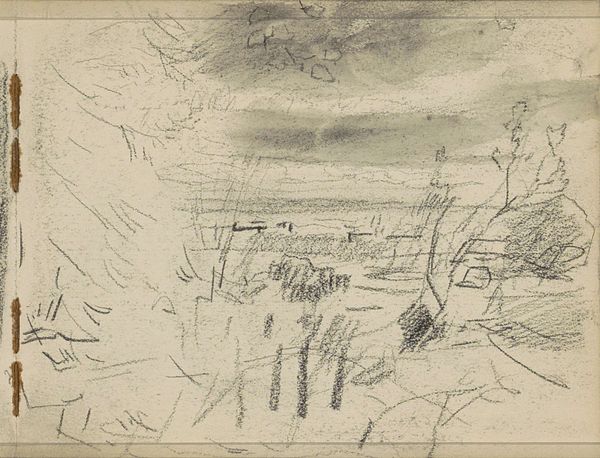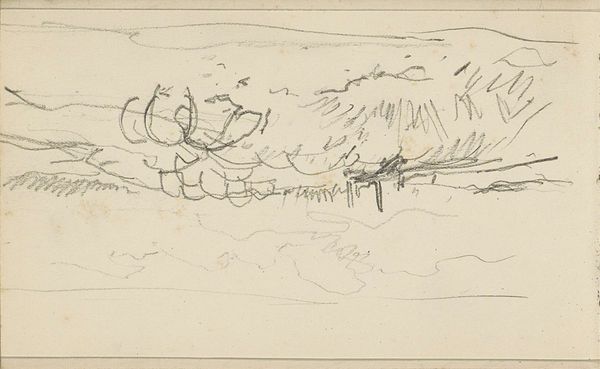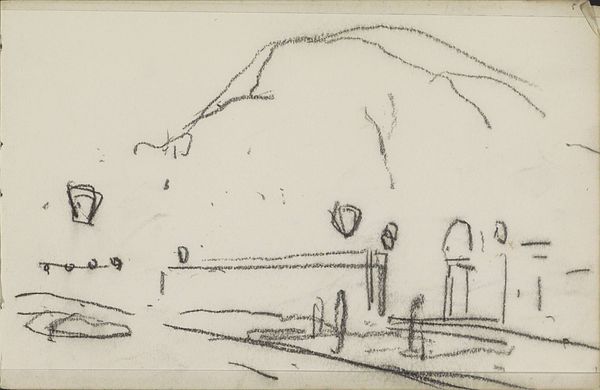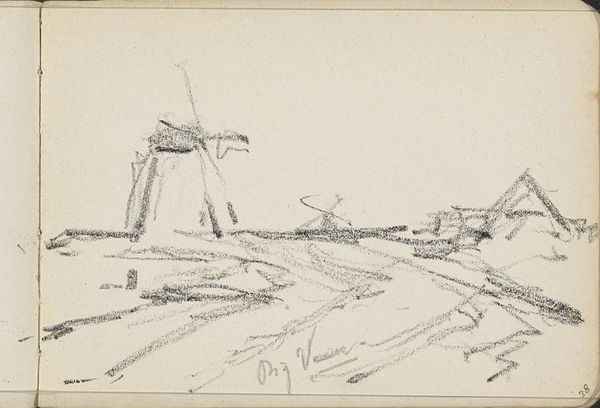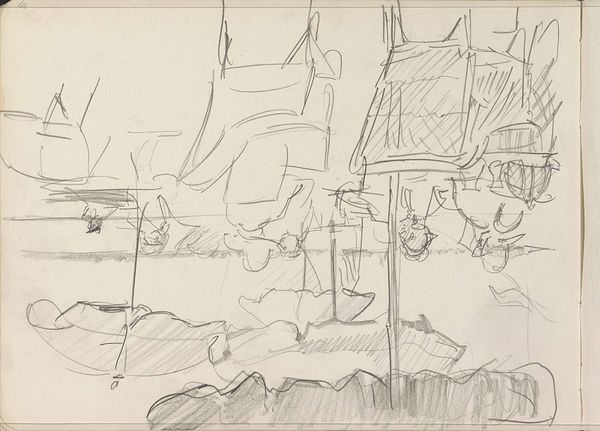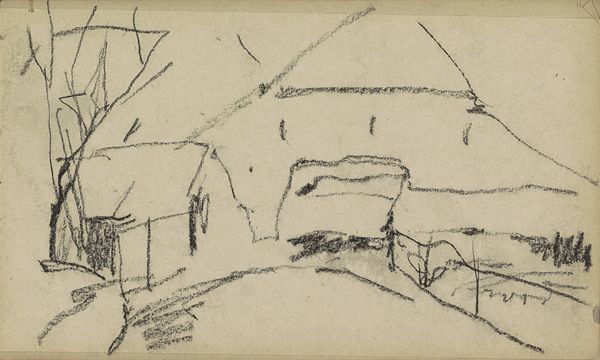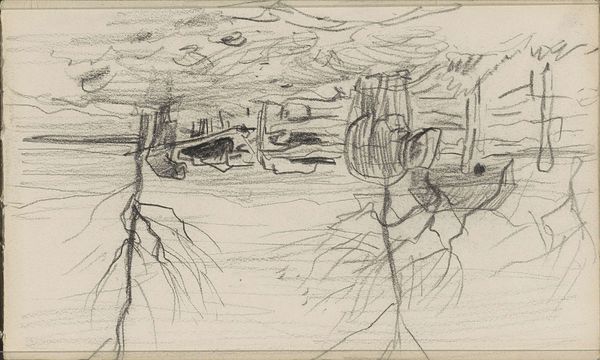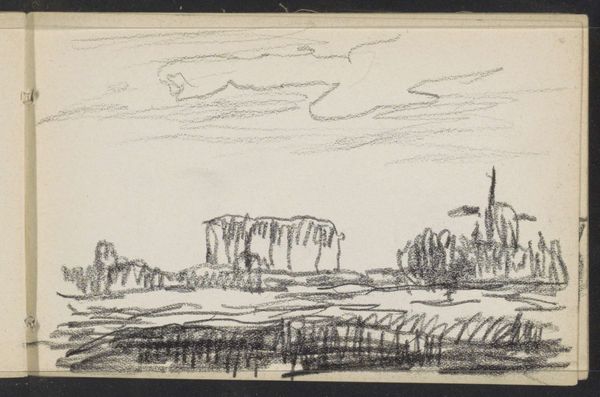
drawing, pencil
#
drawing
#
pen sketch
#
landscape
#
personal sketchbook
#
idea generation sketch
#
sketchwork
#
ink drawing experimentation
#
sketch
#
pen-ink sketch
#
pencil
#
pen work
#
sketchbook drawing
#
storyboard and sketchbook work
#
sketchbook art
#
realism
Copyright: Rijks Museum: Open Domain
Curator: This spirited little sketch is "Landschap met water en molens," or "Landscape with Water and Windmills," dating back to 1908, attributed to Alexander Shilling. Editor: My first thought? Fleeting. It feels like a quickly jotted-down memory, a visual haiku of windmills against a wide sky. Almost feels windy looking at it! Curator: Exactly! These rapid strokes offer a privileged glimpse into the artist's initial inspiration, probably drawn in a sketchbook in plein air. The composition places windmills rather centrally on the horizon line dividing the composition equally between the earth and sky. Editor: You can almost smell the damp earth and the turning gears! Shilling really captures that iconic Dutch landscape vibe without getting bogged down in detail. Did windmills feature heavily in the art of the time or this artist in particular? Curator: Windmills, for obvious historical reasons, were pervasive. But the turn of the century saw artists increasingly using them less as literal depictions of industrial progress, and more as symbols, nostalgia perhaps, or even questioning modernization, or romantic emblems of a receding past. And this, specifically, may have served as a memory sketch for Shilling, the artist returning to or reflecting on this motif throughout his broader body of work. Editor: So it’s loaded with context! Looking closely, I love how the scratchy pencil work contrasts with the implied serenity of the subject. It's both restless and calming at once. It feels unfinished. Curator: That tension between process and subject, between idea and finished work, is where much of the emotional punch lives in sketches. They open a window into a maker's mind, and make clear choices about how art responds to shifts in cultural identity. Editor: Well, I find myself strangely drawn to this little gem. There’s something beautifully vulnerable about it, like a whispered secret caught on paper. It invites speculation and personal storytelling in ways a more 'finished' painting wouldn't. Curator: Perhaps we're witnessing, in this very intimate moment, the artistic spark igniting—that elusive first brushstroke that sets creativity in motion and which then filters its way out into our broader social understanding of identity and history.
Comments
No comments
Be the first to comment and join the conversation on the ultimate creative platform.
